Popular:
Popular:
With the Vietnam War in its fifth year, around 55% of Americans think it’s a mistake and are tired of risking the lives of their loved ones who are being drafted to fight in what they feel is someone else’s war. The newly elected President Nixon fails to listen to the will of the people and announces his new Vietnamization strategy aimed at a vague gradual reduction of America’s involvement in the war instead of ending it. Anti-war protests continue nationwide.
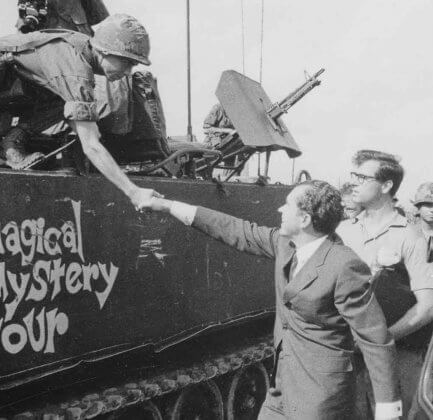
After inheriting a war brought on by his predecessors’ staunch anti-communist policies, President Nixon announces that a gradual decrease of US troops in Vietnam while increasing the size of the South Vietnamese Army is the best way to prevent the death toll from growing. Disappointed Americans don’t understand that a full withdrawal of US troops would be too risky and could lead to a calamitous Vietcong victory, and the dangerous spread of communism.
Despite promising 10 days earlier to withdraw 150,000 US troops from South Vietnam within the next year, Nixon shocks Americans by announcing his authorization of a US invasion into neighboring Cambodia to attack Viet Cong headquarters. Because of the draft, Americans are shocked and angry at Nixon for expanding America’s role in the war instead of putting an end to it. This betrayal strengthens the nation’s anti-war movements, including on college campuses.
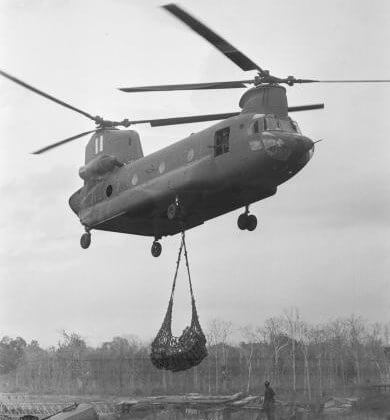
To protect the lives of US soldiers who remain in Vietnam and to safeguard their withdrawal efforts and the Vietnamization program, President Nixon authorizes a preemptive strike into Cambodia, where the enemy has established safe havens from which to wage attacks on US troops. Nixon reasons that America has no other option for victory but to be proactive against the vicious Viet Cong.
To protest Nixon’s outrageous decision to risk more American lives in Cambodia, college students intensify their anti-war rallies at campuses nationwide. At Kent State University, around 500 students peacefully bury a copy of the U.S. Constitution to symbolize the “murder” of constitutional rights by invading another country without Congressional approval. They continue to bond over their indignation into the night, drinking in town with other activists and local non-students. Heightened emotions lead to rowdiness, but don’t justify the excessive police force used against them.
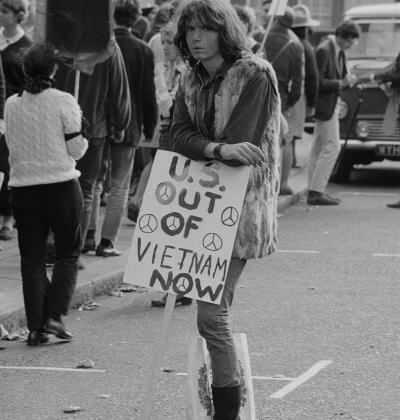
Peaceful demonstrations are one thing, but it is quite another when Kent State University student protestors fueled by alcohol use politics as an excuse to vandalize public property, break windows of local stores and banks, damage police cars and set bonfires in the center of town. Trying to diffuse the mayhem by stemming the alcohol, authorities order the early closure of all bars. However, it’s a no-win situation, as doing so sends hundreds more people into the streets, where riot-geared police try to disperse the unruly crowd, which only incites them more.
Though resentful of the heavy handedness used by law enforcement the night before, many Kent students assist with the downtown cleanup. Some view Kent Mayor Leroy Satrom’s declaration of a state of emergency exaggerated. With no way to dispel circulating rumors about radicals intent on destroying the town, all students are forced to obey a day-long curfew, though plans are in motion for a second student protest that evening. With Nixon calling them bums, the students show the world they deserve respect and cannot be silenced.
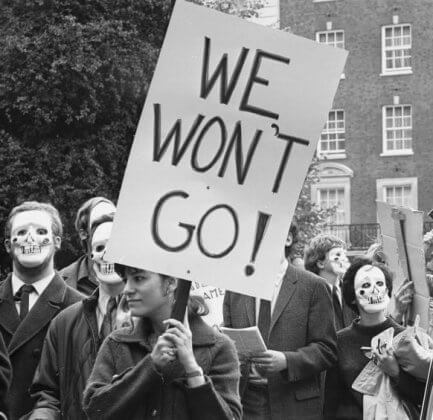
Wary of persistent rumors of more destruction by anti-war radicals, Kent authorities enact a curfew to keep students in their dorms. Mayor Satrom contacts the Governor about calling in the Ohio National Guard. Toward evening, the day’s calm erupts into violence when more than 1000 students gather on campus, surround the Army Reserve Officer Training Corp (ROTC) building and burn it to the ground. It reaches the point where Guardsmen need to use tear gas to disperse protestors, especially those interfering with firemen.
The new presence of 1,000 National Guard soldiers on campus is an unwelcome attempt at intimidation, as is Ohio Governor James A. Rhodes’s antagonizing declaration that the anti-war student protesters are unpatriotic and “the worst type of people that we harbor in America.” The authorities purposely lump all student protestors together with radicals. Hostility increases when the National Guard, Kent police, Ohio highway patrol, and the county sheriff’s department jointly prevent students from peacefully protesting.
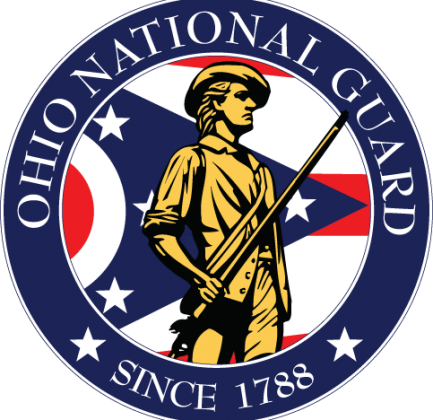
After two days of violence, the National Guard is essential to restore order at Kent State. When a group of student demonstrators assemble that evening, ignoring the National Guard’s orders for immediate enforcement of a new curfew, guardsmen are forced to read aloud the Ohio Riot Act and disperse the crowd however they can. Met with obscenities and belligerence, law enforcement have no choice but to resort to force against the students for self-protection.
Feeling like Kent State is a war zone, some 2,000 antagonized students gather to protest both the National Guard and Vietnam War. Initially peaceful, the rally quickly turns violent and then deadly shortly after noon, when protestors, hit with tear gas, are set upon by 77 Guards marching at them with fixed bayonets. Twenty-eight of the Guards suddenly, with no warning, open fire into the crowd of innocent, unarmed students, unleashing 60-70 rounds in 13 horrific seconds, leaving 4 students dead, and 9 wounded in what came to be known as the Kent State Massacre.
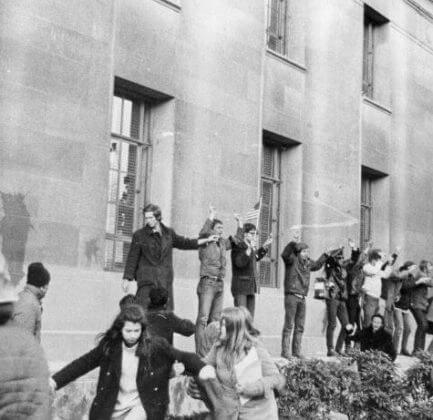
Despite 12,000 leaflets being distributed to cancel the day’s rally, some 2,000 angry students gather on campus anyway. While National Guard units are called upon to disperse them, the students shout obscenities, chant “kill, kill, kill” and throw rocks and chunks of concrete at the Guards, some of whom are Kent students themselves. While trying to calm the mob, the Guards get trapped by a football field’s surrounding fence. Fearfully huddling together to protect themselves during their retreat, 28 kneel and fire their guns into the air and the crowd in self-defense.
In response to the tragic massacre of the four Kent State University students who lost their lives protesting an unjust war, four million college students and administrators across the nation erupt in fury at this battle waged on US soil, uniting in a nationwide student strike. Lasting a week, it involves more than 500 universities, colleges and high schools, all supporting the boycott of classes or closures out of solidarity and fear. Protestors take to the streets in multiple cities, feeling that the heartless Nixon administration doesn’t value its citizens’ lives, neither abroad nor at home.
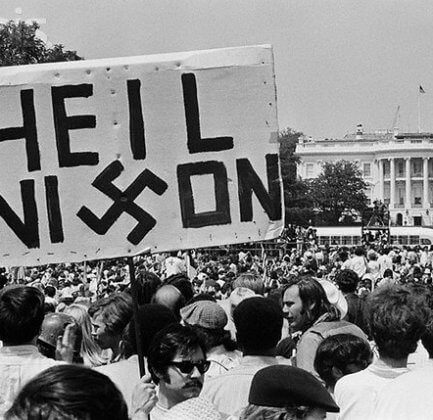
To restore calm, Kent State University officials immediately close the school for six weeks. The hostile antiwar movement has weakened the country by disobeying and threatening authorities. The White House reacts to this preventable and predictable shooting by reminding Americans that “when dissent turns to violence, it invites tragedy.” His administration also publicly calls on the nation’s campuses to stand firmly for their right to dissent but to reject resorting to violence while doing so. Nixon also vows to find more effective methods to deal with future unrest.
Despite a divide emerging between peaceful and militant student protestors, their week-long national strike not only succeeds in gaining solidarity among academia but also caught the attention and respect of President Nixon, who finally recognizes the students’ frustration with his Vietnam policies. The size of their strike and the national fervor it stirs forces Nixon to meet with student protestors, acknowledge them as citizens and not as “bums,” and to validate their concerns. The historic strike also shows critics that they are no less patriotic than those fighting in Vietnam.
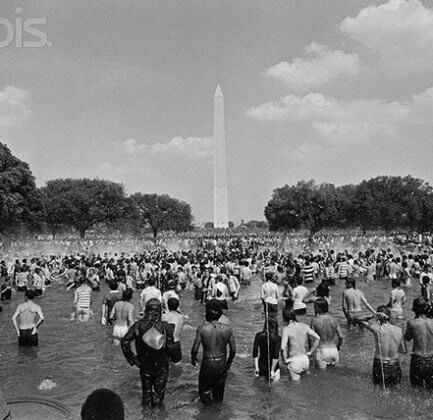
With nationwide student strikes growing and the Kent State shootings radicalizing even moderate student protestors, President Nixon feels a moral obligation to address the antiwar movement, especially as demonstrations reach the National Mall. He personally meets with a number of student demonstrators, and while he does not support their cause, he finds compassion to tell them, “I know that probably most of you think I’m an SOB” and that he understands how they feel. He also refrains from taking militant action to stop their demonstration.
President Nixon rightly establishes the Scranton Commission to study the dissent, disorder, and violent confrontations on college and university campuses. The Report’s findings, that the shootings at Kent State were unjustified, as there had been no order to fire and the danger the Guardsmen faced did not call for lethal force, are welcome, but they are too little too late. They won’t bring back the lives of the four murdered students and they don’t offer any federal or legal resolutions.
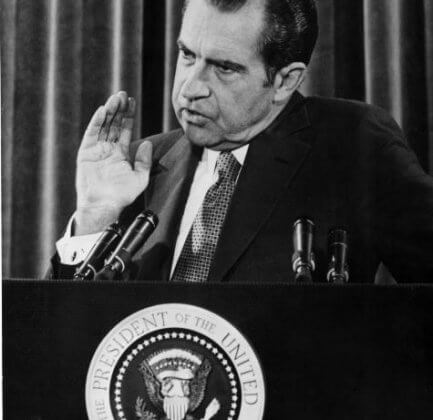
The Scranton Commission and Report are instrumental in the process of figuring out why the Kent State tragedy happened. The shooting must “mark the last time that, as a matter of course, loaded rifles are issued to guardsmen confronting student demonstrators.” That being said, the Report evades the decisive role that political and intellectual leadership of certain universities have played in the unrest by encouraging or giving into radical thinking among their students to use violence as a weapon for achieving specific political gains.
During one of many court cases, this federal criminal trial, which forced survivors, families of those slain, and eight National Guardsmen being prosecuted to relive the heartbreaking events of the Kent State shooting, the Justice Department proved that the shootings were excessive and unjustified, and that Guards fired without being ordered to do so. Tragically, these facts are not enough to convict the Guardsmen. For the supporters of those murdered, this acquittal stifled justice.
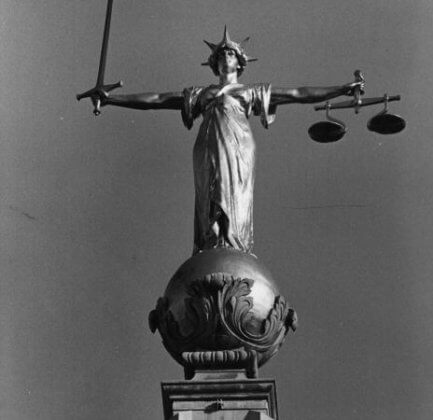
As government prosecutors did not prove beyond a reasonable doubt that the eight former Ohio National Guardsmen willfully intended to deprive the victims of their civil rights, the Federal District chief judge Frank Battisti rightfully acquitted them, to their significant relief. The judge cautioned that it was vital that state and National Guard officials not regard his decision as authorizing or approving the use of force against demonstrators, no matter the occasion or issue. “Such use of force is, and was, deplorable.”
